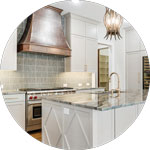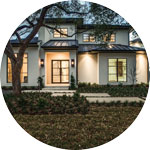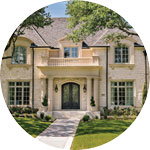Closet Confessions: HALL Arts Residences And Ornare Host a Panel on Smart Storage For Fashion Lovers
Share News:

For fashion lovers, little thrills them more than a really good closet. (The one Big had built for Carrie? We rest our case.) Put that dream 21 stories in the sky — with glittery views of Dallas all around — and it’s a match made in high-rise heaven.
One of the spectacular homes at HALL Arts Residences features a custom closet by Ornare, the Brazil-based company that makes some of the most exquisite closets and kitchens in the world. Recently, that sleek, chic closet — with its glass-front cabinets, museum lighting and drawers galore — was the reason for an exclusive gathering where industry experts shared advice and recommendations for luxury closet enthusiasts. The Dallas team at Ornare served as co-hosts with HALL Arts Residences.
Lucky guests got the chance to explore the gorgeous Ornare closet in Residence 2102 and hear from a panel of distinguished design and space-planning experts that included Eddie Abeyta, co-founder of Abeyta Tibbs Architecture; Gonzalo Bueno, co-founder of design firm Ten Plus Three; Terri Beverley, professional organizer and visionary of Custom Spaces; Olavo Faria, Ornare’s Dallas director; and moderator Terri Provencal, editor-in-chief of Patron Magazine.

Here’s a peek into the lively conversation.
Terri Provencal: What has it been like to work at HALL Arts Residences — and what makes these stunning homes the perfect residential project for Ornare closet systems?
Olavo Faria: Working with HALL Arts Residences is a perfect match with Ornare. We share the same clientele, so we know their needs and desires and how to take care of them when they are building their dream closet. HALL Arts Residences is an amazing project, in an amazing location, with amazing architecture, interior design and floor plans and the highest level of finishes. So, being a part of it is wonderful.
TP: Closets have come a very long way and they’re getting bigger and more exciting, even a place of respite. What are the current trends in closet design?
Terri Beverley: The size of closets has grown tremendously. As a culture, we are constantly consuming, and most people do not get rid of product as they bring a new product into their home. Those spaces where they house their garments and wardrobes are growing and we must come up with solutions on how to make all those items fit.
Gonzalo Bueno: We believe the shift in the closet industry has a lot to do with what has happened in the fashion industry. People are investing more into their fashion collections now than they were 20 years ago. With beautiful pieces and collectibles, they need special places to be stored and showcased. And that needs to match the level of the home, with a beautiful system in quality and design.

TP: Terri, walk us through your best practices for organizing your clientele’s closets.
TB: When I go into a client’s home, I assess the space to see what’s available vertically and horizontally. Then I take the clothes out of the closet and organize them by category. The closet must be completely empty to see the space. Once empty, we install drawer liners, custom inserts, hooks and anything else that makes the closet function better. How I put things back in that space is truly dependent on the client’s lifestyle.
TP: Eddie, nothing can be more essential than to access things, to reach things — especially when you’re running late! You need to know exactly where everything is. How do you navigate the relationship between functionality and beauty in your designs?
Eddie Abeyta: When thinking of the intimate space of a closet, you begin to think of the details of the experience: the handles, the textures, the grooves. Is it made from aluminum, wood or leather — and how do those materials impact the experience and the functionality? With the design process, you start by putting yourself in the client’s shoes and making sure you really understand how they want to interact with their belongings on a very personal level.
TP: I could imagine it’s difficult for clients to let go of things. Terri, how do you help your clients let go of some of their belongings?
TB: A tip I give clients is to put something on [and look in the mirror]. If you think it doesn’t look right on you, put it aside to perhaps donate or sell. We will have a space in the closet where they can put those pieces. At some point, we’ll decide where they’ll go.
TP: Texture, color and materials can significantly improve a closet’s visual appeal — as well as its functionality — in many ways. Gonzalo, tell us about some of the features you have incorporated.
GB: Today, we have great options, so it goes back to each client’s personality or their goals. I often recommend open-grain textures and lacquer finishes in more earthy, neutral tones, because clothes can be very colorful. If you can keep a neutral palette for the closet, it will help the closet look more organized and cleaner.
TP: Eddie, you’re currently designing two penthouses at HALL Arts Residences. Walk us through the process of designing a space plan for closets in the primary bedroom, specifically.
EA: The primary bedroom and closet are critical spaces in these penthouse residences. Often, your main closet is the first space you interact with in the morning and the last at the end of the day, before you go to bed. It’s a very special space, so we must be thoughtful and fully understand how someone will experience the space, from what they see with their eyes to how their feet feel on the flooring. Our philosophy? Don’t make it trendy or glitzy, but create something that has a quiet, timeless nature.
















